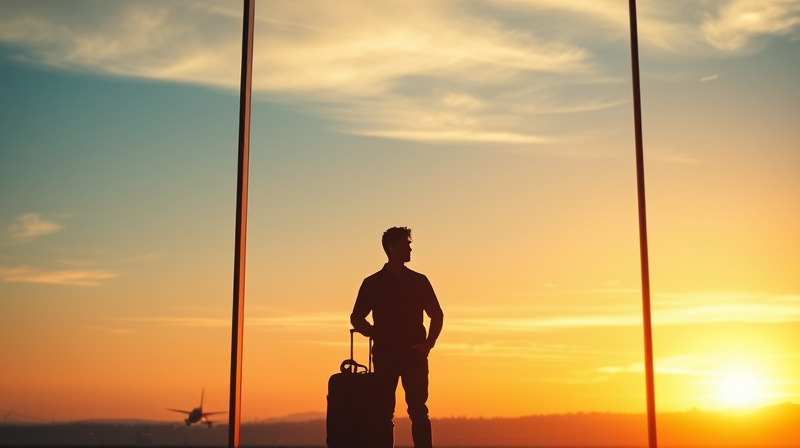Traveling across time zones can be both an exhilarating and challenging experience. The excitement of visiting a new destination is often accompanied by the notorious struggle with jet lag. However, knowing and applying the right techniques can ease the transition into a new time zone. In this article, we explore effective, expert-backed strategies that not only minimize the uncomfortable symptoms of jet lag but also help you stay inspired and energized during every leg of your journey.
Jet lag disrupts your natural sleep-wake cycle and can lead to fatigue, irritability, and reduced concentration. It is important to remember that every traveler is unique. Some may experience mild symptoms while others face more intense challenges. With proper preparation and the right support strategies, you can reduce the impact of jet lag and enjoy your adventure more fully.
Pre-Travel Preparation: A Foundation for Success
An effective approach to combating jet lag begins long before boarding your flight. Adjusting your sleep schedule a few days ahead of time can significantly smooth out the transition. As a key strategy, travelers heading eastward should consider:
- Shifting your sleep by going to bed and waking up 30-60 minutes earlier each day.
- Adjusting meal times gradually to align with the destination’s schedule.
For those traveling westward, a similar strategy applies, but in reverse. Delay your sleep and wake times by 30-60 minutes daily. These small shifts can lead to a dramatic difference once you arrive, easing your body into its new rhythm.
Preparation is key. It not only helps your body adjust to the new time zone but also builds confidence as you start your journey. Embrace this phase of planning, seeing it as an essential part of your travel experience.
During the Flight: Creating a Restful Environment
Long-haul flights can be taxing. The cabin environment often exacerbates feelings of fatigue, but turning your flight experience into a period of restorative rest is possible. Managing your light exposure during the flight is one of the most effective strategies.
Experts suggest syncing your exposure to light with the destination's daytime. If you need to sleep during a time when it is daylight at your destination, using an eye mask can be incredibly helpful in creating a comfortable environment. Additional measures to consider include:
- Staying hydrated by regularly drinking water throughout your flight.
- Limiting alcohol and caffeine consumption which can further disrupt sleep patterns.
- Creating a cozy atmosphere by using a high-quality neck pillow, a comfortable blanket, and earplugs or noise-canceling headphones.
Employing relaxation techniques such as deep breathing exercises, meditation, or yoga nidra helps calm your mind and body, preparing you for restful sleep despite the challenges of travel.
Upon Arrival: Recalibrating Your Body Clock
When you land at your destination, your journey to adapt has just begun. The natural light at your new location plays a crucial role in recalibrating your body clock. Exposure to morning sunlight is particularly beneficial as it signals your body to start the day. This natural cue is essential in resetting your sleep-wake cycle quickly.
It is advisable to remain awake until at least 9 PM local time. This helps consolidate your new schedule and encourages better sleep at night. Integrating physical activity further contributes to your adjustment process:
- Take morning walks or engage in light exercises to boost your energy levels and speed up the adjustment.
- Avoid strenuous workouts near bedtime as they may energize you and interfere with sleep.
Remember: Your body needs time to fully adapt to the new time zone. It is okay to experience a few setbacks as you settle into your new routine.
Nutrition, Supplementation and Other Practical Tips
Your nutrition and overall hydration can significantly impact your ability to cope with jet lag. During your adjustment period, it is wise to modify your meal choices and timings to align with local schedules. Opt for light, easily digestible foods to avoid any extra stress on your system.
Some travelers find melatonin supplementation helpful in directing their sleep-wake cycle. If you decide to use melatonin, start with a low dose—typically between 0.25 and 1 mg—and schedule it according to your destination’s local time. More importantly, maintain your hydration as it is a cornerstone of a healthy adjustment.
Exercise should be done with care. Strategic physical activity, especially in the morning or early afternoon, can assist your body in naturally shifting its rhythm. However, avoid intensive workouts between 7 PM and 10 PM, as this might delay your sleep further.
Short power naps or even the practice of Yoga Nidra—sometimes called "yoga sleep"—can be beneficial. Just 15-20 minute naps may refresh your mind without interfering with nighttime sleep, while Yoga Nidra can mimic several hours of rest in a brief session, leaving you feeling rejuvenated.
By staying proactive and mindful during every phase of your journey, even the most severe jet lag can become a manageable part of travel. Every step you take toward managing your sleep patterns, hydration, and exposure to natural light directly contributes to a smoother, more enjoyable travel experience.
Overall, combining these proven strategies with a willingness to adjust can turn the challenge of jet lag into a small price to pay for the joy of global exploration. Embark on your travel adventures with confidence and let these suggestions be the guide to tasting every moment without the shadow of fatigue. Your journey to a refreshed and energized travel experience starts with a single, mindful step.
Whether you’re setting out on a quick business trip or a long-awaited vacation, keep these tips close and be gentle with yourself as you adapt. The process of overcoming jet lag might have its hurdles, but every effort you put into aligning your schedule leads to a more enriching and inspiring travel experience.








